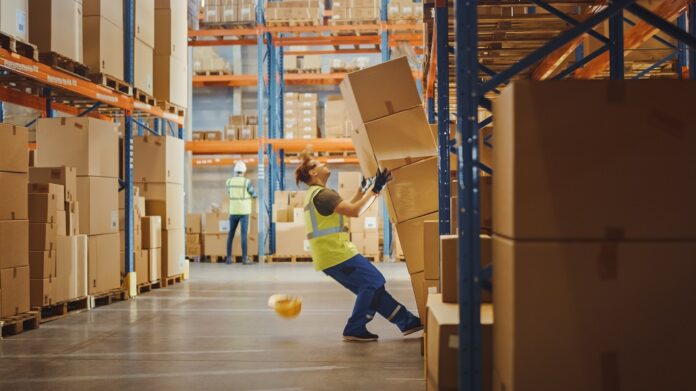Every job has its own set of occupational hazards, but working in a warehouse can be particularly dangerous, especially when the risks are less noticeable. In the unfortunate event of a workplace accident in a warehouse, employees may need to file a warehouse accident claim to receive compensation for any injuries sustained on the job.
However, it’s important to remember that prevention is critical. With knowledge of the most common hazards in a warehouse, employees can take steps to avoid accidents and maintain a safe work environment. This article will discuss the most common hazards in a warehouse that lead to accidents in the US.
Slips, Trips, and Falls
According to OSHA, slips, trips, and falls account for most accidents in the general industry. These incidents account for 15% of all accidental fatalities and are the second-leading cause of fatalities after motor vehicles. Despite how frequently they occur, slip, trip, and fall incidents are easily avoidable by putting the proper safety precautions in place. Even incidents on the same level can result in serious injuries, although falls from height are frequently the most severe.
Employees must maintain clutter-free, organized, clear work areas to reduce these risks. For instance, a warehouse worker should remove obstructions from the aisles and walkways before leaving.
Another overlooked aspect that can increase the risk of accidents at work is inadequate lighting. Adding more lighting to the stairs and hallways can help prevent accidents because dim lighting can make it difficult to see potential dangers.
Forklift Crashes
The National Institute for Occupational Safety and Health (NIOSH) claims that various elements, including the forklift itself, the working environment, and the operator’s actions, contribute to fatal incidents. Giving forklift operating training is crucial to lowering the risk of harm and death. Additionally, it is essential to regularly inspect vehicles before use to find any defective parts that might cause an accident.
Even though mishaps are unavoidable, employers can take steps to create a workplace that prioritizes security and reduces risks to workers. Employees can better identify risks and avoid accidents with regular training and adequate resources. The benefits go beyond reducing accidents and lowering compensation claims; they can also increase productivity and efficiency across all business units.
Hazardous Material Incidents
Accidental spills can be fatal. Production and distribution centers frequently receive shipments containing hazardous or volatile materials. Even small leaks and spills threaten worker safety, despite the common misconception that large-scale spills are the most dangerous. Workers are better prepared when a chemical spill occurs because they have the knowledge and skills to contain and clean up the material. Employers must also ensure employees can access the most recent safety data sheets (SDSs) and the appropriate personal protective equipment (PPE) when handling hazardous materials.
Fire
Highly flammable substances like cardboard, plastic, and wood make it simple for a fire to spread quickly and go out of control in minutes. Various things, such as angry workers, defective electrical wiring, and dangerous heating equipment, can result in fires.
It is essential to ensure you have the necessary building permits and to carry out routine inspections to ensure your warehouse complies with fire protection regulations to prevent warehouse fires. It includes having marked exits and fire extinguishers that are kept up-to-date. A reliable sprinkler and fire alarm system can significantly slow or even stop a fire until the fire department arrives in an emergency.
Conclusion
Accidents may occur, but employers can reduce the risks by implementing regular training programs and giving employees access to the right resources. Employees can then take the necessary actions to avoid accidents by becoming more aware of potential hazards. It not only lowers the number of accidents and increases productivity and efficiency across the board for the entire company. Ultimately, putting safety first at work can benefit the staff members and the business.


